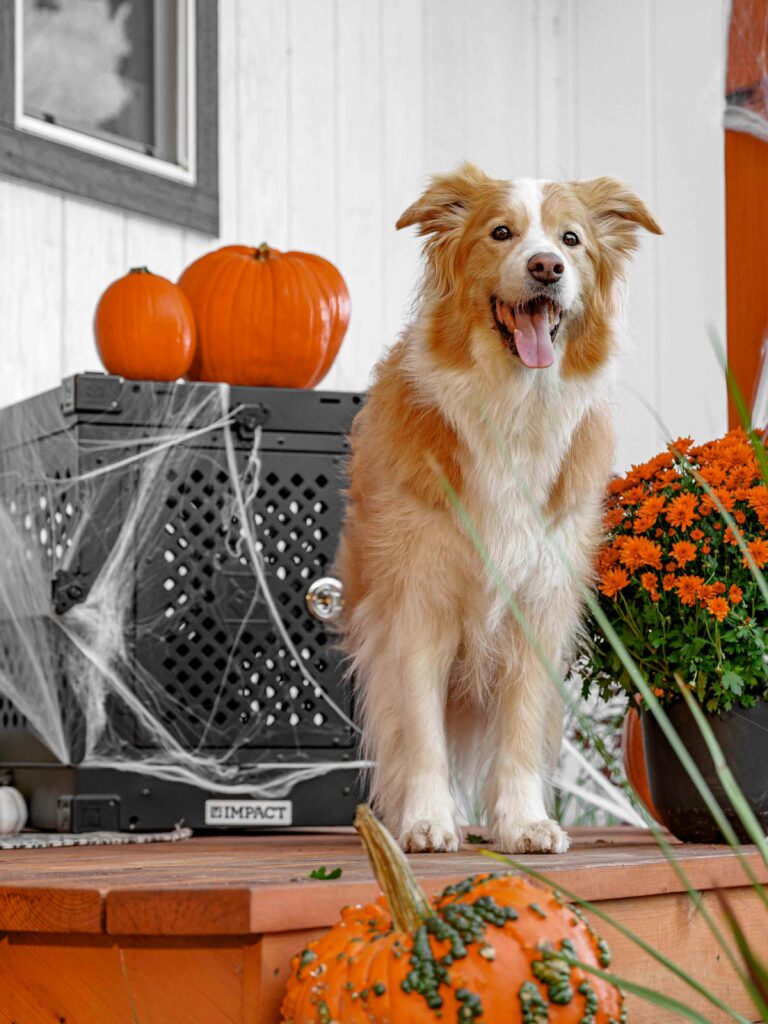When many owners hear “crate training,” their first thought is confinement or punishment. That misunderstanding can delay one of the most helpful habits you can build. Done correctly, crate training gives your dog a safe retreat, supports housebreaking, reduces anxiety, and creates structure your whole family can count on.
As a trainer, I have worked with many families who were hesitant at first. Once they introduced the crate gradually and positively, their dogs began choosing it on their own. The crate became a calm, predictable space, not a penalty box.
Let’s walk through why crates work, how to introduce them the right way, and how to troubleshoot common roadblocks.
Why Crate Training Works
Dogs are den animals. They naturally seek enclosed, cozy places to settle and relax. A crate taps into that instinct in a safe, modern way.
Key benefits:
- Safety when unsupervised. Prevents chewing hazards, ingestion of dangerous items, and door darting.
- Housebreaking help. Most dogs avoid soiling where they sleep, which accelerates potty training.
- Travel readiness. Crate comfort makes car rides, hotel stays, and boarding far less stressful.
- Lower arousal. When the environment is busy or loud, the crate offers a familiar calm zone.
Used thoughtfully, a crate supports a dog’s emotional regulation and your household’s rhythm.
Common Misconceptions
The biggest myth is that crates are “jail.” Crates feel restrictive only when they are used punitively or for too long. When introduced with patience, food rewards, and short sessions, the crate becomes a place dogs actively seek out for rest.
If your dog is sensitive to handling or startles easily, building comfort through boundaries can help. Our guide on touch tolerance explains how safe spaces and respectful handling boost confidence, which pairs nicely with crate work.
Choosing and Setting Up the Crate
- Size: Your dog should stand up, turn around, and lie down comfortably. For growing puppies, use a divider panel so the space starts snug and expands over time.
- Location: Place the crate where the family spends time, not in isolation. Bedrooms or living rooms work well for overnight and daytime rest.
- Comfort: Add a chew resistant bed or mat, a safe chew, and cover part of the crate if your dog relaxes better with a denlike feel.
How to Introduce the Crate Positively
- Open door, zero pressure. Prop the door open and toss treats inside so your dog can explore freely. Praise any voluntary steps in.
- Feed meals in the crate. Start with the bowl at the entrance. Gradually move it deeper across several sessions.
- Short, sweet reps. Close the door for 30 to 60 seconds while your dog enjoys a stuffed KONG or long lasting chew. Open the door before they finish.
- Build duration slowly. Add a minute or two per session, mixing in easy, shorter reps so the pattern stays positive.
- Pair with calm exits. Wait for a moment of quiet, then open the door. This teaches that calm behavior is the key to release.
- Never use the crate as punishment. If your dog associates scolding with crating, they may resist entering later.
Consistency beats marathon sessions. Do several micro sessions daily instead of one long push.
When and How Long To Crate
Crates are a tool, not a lifestyle. Balance crate time with exercise, engagement, and training.
- Puppies under 6 months: generally 2 to 4 hours at a time, with frequent potty breaks.
- Adults: 4 to 6 hours is a reasonable daytime limit for most dogs if their needs are met before and after.
- Overnight: Fine for dogs that are comfortable and have had a potty break and wind down routine.
If your schedule demands more daytime crate time than your dog can handle, add a midday potty break, dog walker, or day training option.
Building a Routine That Works
Create predictable rhythms so your dog knows what to expect.
- Morning: Potty, exercise, training, then a calm crate session with a chew.
- Midday: Short potty break and mental enrichment, then rest.
- Evening: Exercise, family time, and a wind down routine before bedtime crating.
Structure reduces anxiety for both dogs and kids. If you want help designing a plan that fits your family, our Basic Obedience Program builds daily routines that are realistic and sustainable.
Troubleshooting Common Challenges
Whining or barking in the crate
- Ignore attention seeking noise. Mark and reward quiet moments.
- Cover part of the crate and move it to a lower traffic area if visual stimulation is the trigger.
- Use a predictable sequence: potty, exercise, calm chew, then crate.
Reluctance to enter
- Use higher value rewards and reserve a special chew that only appears in the crate.
- Practice fun “crate games”: cue in, feed, cue out, repeat, keeping reps quick and upbeat.
Accidents in the crate
- Reduce duration between potty breaks.
- Check bedding. For some pups, temporarily removing plush bedding prevents confusion about where to eliminate.
Chewing or pawing at the door
- Ensure physical and mental needs are met first.
- Start with shorter intervals and build gradually.
- Add white noise to reduce outside triggers.
If your dog shows escalating distress, pause and reassess. A short reset often prevents bigger issues. Hands on coaching can make a major difference, especially for anxious dogs.
Pairing Crate Time With Enrichment
Crates should predict good things. Rotate safe, durable options:
- Stuffed KONGs or puzzle feeders with part of the daily ration
- Braided, long lasting chews sized appropriately
- Sniff and settle routines before crating, like a short foraging game
This helps your dog switch from play mode to rest mode smoothly.
Kid and Dog Safety Around the Crate
Teach family rules so everyone respects the den:
- No fingers through bars, tapping, or teasing.
- No climbing on the crate.
- When the dog is crated, they are off duty.
- Kids can help by preparing the special crate chew or placing a treat on the mat before you cue “kennel.”
Clear rules prevent misunderstandings and keep the crate a safe space.
Travel and Vet Prep
Crate comfort pays off beyond the living room. Dogs that are confident in their crates travel more calmly, recover more easily after procedures, and handle hotel or boarding stays with less stress. Practice short car rides with the crate secured so that travel becomes routine, not rare.
Expert Resource
For a detailed, step by step walkthrough you can reference anytime, see PetMD’s guide to crate training: https://www.petmd.com/dog/general-health/crate-training-puppies. It aligns well with the approach above and offers additional troubleshooting ideas.
Final Thoughts: The Crate Is a Comfort Zone, Not a Cage
When introduced thoughtfully, a crate is a gift. It gives your dog a predictable refuge, supports better manners, and reduces chaos in busy households. With patient, positive reps, your dog will see the crate as their own peaceful den.
Want step by step guidance tailored to your home? Reach out through our contact page and we will build a plan for you using our proven methods: get in touch with our team. For structured skill building beyond the basics, explore our Basic Obedience Program.




